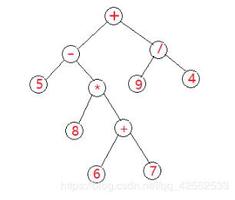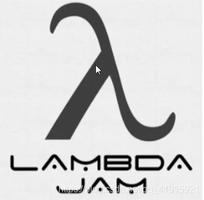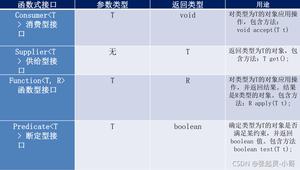使用ANTLR的嵌套布尔表达式解析器
我试图解析嵌套的布尔表达式,并分别获取表达式内的各个条件。例如,如果输入字符串是:
(A = a OR B = b OR C = c AND((D = d AND E = e)OR(F = f AND G = g)))
我想以正确的顺序得到条件。即
D = d AND E = e OR F = f AND G = g AND A = a OR B = b OR C = c
我正在使用ANTLR 4来解析输入文本,这是我的语法:
grammar SimpleBoolean;rule_set : nestedCondition* EOF;
AND : 'AND' ;
OR : 'OR' ;
NOT : 'NOT';
TRUE : 'TRUE' ;
FALSE : 'FALSE' ;
GT : '>' ;
GE : '>=' ;
LT : '<' ;
LE : '<=' ;
EQ : '=' ;
LPAREN : '(' ;
RPAREN : ')' ;
DECIMAL : '-'?[0-9]+('.'[0-9]+)? ;
IDENTIFIER : [a-zA-Z_][a-zA-Z_0-9]* ;
WS : [ \r\t\u000C\n]+ -> skip;
nestedCondition : LPAREN condition+ RPAREN (binary nestedCondition)*;
condition: predicate (binary predicate)*
| predicate (binary component)*;
component: predicate | multiAttrComp;
multiAttrComp : LPAREN predicate (and predicate)+ RPAREN;
predicate : IDENTIFIER comparator IDENTIFIER;
comparator : GT | GE | LT | LE | EQ ;
binary: AND | OR ;
unary: NOT;
and: AND;
这是我用来解析它的Java代码:
ANTLRInputStream inputStr = new ANTLRInputStream(input);SimpleBooleanLexer lexer = new SimpleBooleanLexer(inputStr);
TokenStream tokens = new CommonTokenStream(lexer);
SimpleBooleanParser parser = new SimpleBooleanParser(tokens);
parser.getBuildParseTree();
ParseTree tree = parser.rule_set();
System.out.println(tree.toStringTree(parser));
输出为:
(rule_set (nestedCondition ( (condition (predicate A (comparator =) a) (binary OR) (component (predicate B (comparator =) b)) (binary OR) (component (predicate C (comparator =) c)) (binary AND) (component (multiAttrComp ( (predicate ( D (comparator =) d) (and AND) (predicate E (comparator =) e) ))) (binary OR) (component (multiAttrComp ( (predicate F (comparator =) f) (and AND) (predicate G (comparator =) g) )))) ) )) <EOF>)我正在寻找有关如何解析此树以正确顺序获取条件的帮助?在ANTLR3中,我们可以指定^和!决定如何构建树,但是我了解到ANTLR 4不支持此树。
有人可以建议我如何使用ANTLR创建的ParseTree在Java中以正确的顺序解析String吗?
回答:
我只是将所有表达式包装成一条expression规则。一定要定义comparator的替代表述 之前
你binary表达的替代,以确保comparator运营商绑定更紧密比OR和AND:
grammar SimpleBoolean;parse
: expression EOF
;
expression
: LPAREN expression RPAREN #parenExpression
| NOT expression #notExpression
| left=expression op=comparator right=expression #comparatorExpression
| left=expression op=binary right=expression #binaryExpression
| bool #boolExpression
| IDENTIFIER #identifierExpression
| DECIMAL #decimalExpression
;
comparator
: GT | GE | LT | LE | EQ
;
binary
: AND | OR
;
bool
: TRUE | FALSE
;
AND : 'AND' ;
OR : 'OR' ;
NOT : 'NOT';
TRUE : 'TRUE' ;
FALSE : 'FALSE' ;
GT : '>' ;
GE : '>=' ;
LT : '<' ;
LE : '<=' ;
EQ : '=' ;
LPAREN : '(' ;
RPAREN : ')' ;
DECIMAL : '-'? [0-9]+ ( '.' [0-9]+ )? ;
IDENTIFIER : [a-zA-Z_] [a-zA-Z_0-9]* ;
WS : [ \r\t\u000C\n]+ -> skip;
要测试上面的语法,请使用以下快速测试类:
public class Main { public static void main(String[] args) throws Exception {
Map<String, Object> variables = new HashMap<String, Object>() {{
put("A", true);
put("a", true);
put("B", false);
put("b", false);
put("C", 42.0);
put("c", 42.0);
put("D", -999.0);
put("d", -1999.0);
put("E", 42.001);
put("e", 142.001);
put("F", 42.001);
put("f", 42.001);
put("G", -1.0);
put("g", -1.0);
}};
String[] expressions = {
"1 > 2",
"1 >= 1.0",
"TRUE = FALSE",
"FALSE = FALSE",
"A OR B",
"B",
"A = B",
"c = C",
"E > D",
"B OR (c = B OR (A = A AND c = C AND E > D))",
"(A = a OR B = b OR C = c AND ((D = d AND E = e) OR (F = f AND G = g)))"
};
for (String expression : expressions) {
SimpleBooleanLexer lexer = new SimpleBooleanLexer(new ANTLRInputStream(expression));
SimpleBooleanParser parser = new SimpleBooleanParser(new CommonTokenStream(lexer));
Object result = new EvalVisitor(variables).visit(parser.parse());
System.out.printf("%-70s -> %s\n", expression, result);
}
}
}
class EvalVisitor extends SimpleBooleanBaseVisitor<Object> {
private final Map<String, Object> variables;
public EvalVisitor(Map<String, Object> variables) {
this.variables = variables;
}
@Override
public Object visitParse(SimpleBooleanParser.ParseContext ctx) {
return super.visit(ctx.expression());
}
@Override
public Object visitDecimalExpression(SimpleBooleanParser.DecimalExpressionContext ctx) {
return Double.valueOf(ctx.DECIMAL().getText());
}
@Override
public Object visitIdentifierExpression(SimpleBooleanParser.IdentifierExpressionContext ctx) {
return variables.get(ctx.IDENTIFIER().getText());
}
@Override
public Object visitNotExpression(SimpleBooleanParser.NotExpressionContext ctx) {
return !((Boolean)this.visit(ctx.expression()));
}
@Override
public Object visitParenExpression(SimpleBooleanParser.ParenExpressionContext ctx) {
return super.visit(ctx.expression());
}
@Override
public Object visitComparatorExpression(SimpleBooleanParser.ComparatorExpressionContext ctx) {
if (ctx.op.EQ() != null) {
return this.visit(ctx.left).equals(this.visit(ctx.right));
}
else if (ctx.op.LE() != null) {
return asDouble(ctx.left) <= asDouble(ctx.right);
}
else if (ctx.op.GE() != null) {
return asDouble(ctx.left) >= asDouble(ctx.right);
}
else if (ctx.op.LT() != null) {
return asDouble(ctx.left) < asDouble(ctx.right);
}
else if (ctx.op.GT() != null) {
return asDouble(ctx.left) > asDouble(ctx.right);
}
throw new RuntimeException("not implemented: comparator operator " + ctx.op.getText());
}
@Override
public Object visitBinaryExpression(SimpleBooleanParser.BinaryExpressionContext ctx) {
if (ctx.op.AND() != null) {
return asBoolean(ctx.left) && asBoolean(ctx.right);
}
else if (ctx.op.OR() != null) {
return asBoolean(ctx.left) || asBoolean(ctx.right);
}
throw new RuntimeException("not implemented: binary operator " + ctx.op.getText());
}
@Override
public Object visitBoolExpression(SimpleBooleanParser.BoolExpressionContext ctx) {
return Boolean.valueOf(ctx.getText());
}
private boolean asBoolean(SimpleBooleanParser.ExpressionContext ctx) {
return (boolean)visit(ctx);
}
private double asDouble(SimpleBooleanParser.ExpressionContext ctx) {
return (double)visit(ctx);
}
}
运行Main该类将得到以下输出:
1 > 2 -> false1 >= 1.0 -> true
TRUE = FALSE -> false
FALSE = FALSE -> true
A OR B -> true
B -> false
A = B -> false
c = C -> true
E > D -> true
B OR (c = B OR (A = A AND c = C AND E > D)) -> true
(A = a OR B = b OR C = c AND ((D = d AND E = e) OR (F = f AND G = g))) -> true
以上是 使用ANTLR的嵌套布尔表达式解析器 的全部内容, 来源链接: utcz.com/qa/399842.html






